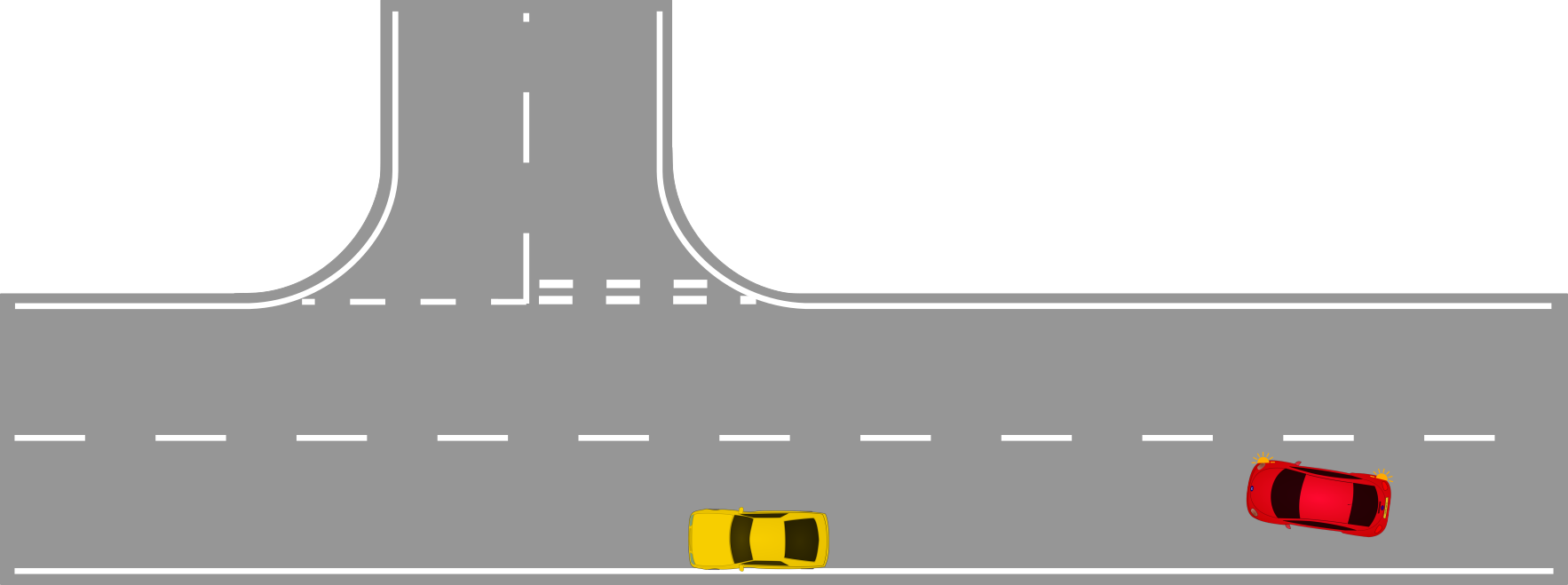
Let's look at a really simple example to start with. Here we are the red car approaching a parked vehicle and apply an indicator to show we are going around it.
Any time you use an indicator, you should always ask yourself two questions: Will it benefit other road users? Could it confuse other road users?
If using an indicator could be confusing, you are always better off not doing it. If no-one will benefit, but it isn't confusing it makes no difference if it is applied or not. It is only essential if it benefits other road users and wouldn't confuse.
So how might we confuse other drivers? In this example other things it might suggest are we are pulling up on the right hand side of the road, or we are entering a driveway or other entrance on the right. Although it could mean something else, most people would likely interpret it correctly. But are we telling other road users what we are doing in another way? We'll see the answer to this a little bit later.

